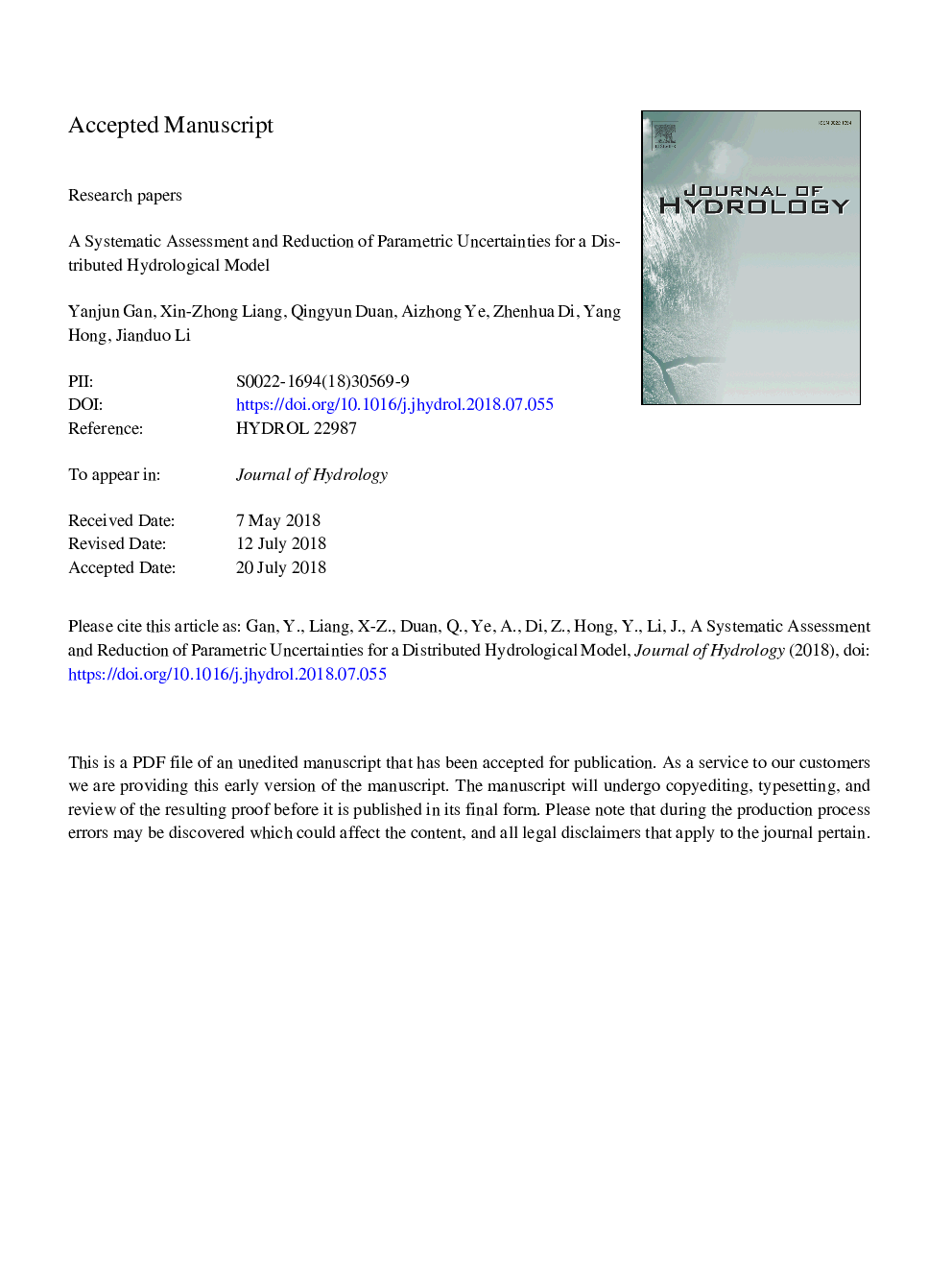| Article ID | Journal | Published Year | Pages | File Type |
|---|---|---|---|---|
| 8894503 | Journal of Hydrology | 2018 | 59 Pages |
Abstract
Quantifying and reducing uncertainties in physics-based hydrological model parameters will improve model reliability for hydrological forecasting. We present an uncertainty quantification framework that combines the strengths of stepwise sensitivity analysis and adaptive surrogate-based multi-objective optimization to facilitate practical assessment and reduction of model parametric uncertainties. Framework performance was tested using the distributed hydrological model Coupled Routing and Excess Storage (CREST) for daily streamflow simulation over ten watersheds. By identifying sensitive parameters stepwisely, we reduced the number of parameters requiring calibration from twelve to seven, thus limiting the dimensionality of calibration problem. By updating surrogate models adaptively, we found the optimal sets of sensitive parameters with the surrogate-based multi-objective optimization. The calibrated CREST was able to satisfactorily simulate observed streamflow for all watersheds, improving one minus Nash-Sutcliffe efficiency (1âNSE) by 65-90% and percentage absolute relative bias (|RB|) by 60-95% compared to the default. The validation result demonstrated that the calibrated CREST was also able to reproduce observed streamflow outside the calibration period, improving 1âNSE by 40-85% and |RB| by 35-90% compared to the default. Overall, this uncertainty quantification framework is effective for assessment and reduction of model parametric uncertainties, the results of which improve model simulations and enhance understanding of model behaviors.
Keywords
Related Topics
Physical Sciences and Engineering
Earth and Planetary Sciences
Earth-Surface Processes
Authors
Yanjun Gan, Xin-Zhong Liang, Qingyun Duan, Aizhong Ye, Zhenhua Di, Yang Hong, Jianduo Li,
